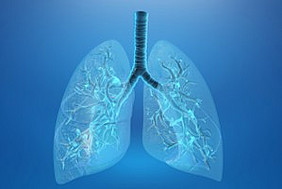Helmholtz Munich scientists, together with an international team of researchers, have developed the "Human Lung Cell Atlas". The atlas shows the diversity of individual lung cell types and allows conclusions to be drawn about the changes that age, smoking, or lung diseases cause in the cells of the respiratory organ. It is the first single-cell atlas of a major organ and was produced as part of the Human Cell Atlas (HCA), a global collaborative project to map the entire body at the single-cell level. The results have now been published in Nature Medicine.
Nearly 100 partners and 60 international institutes collaborated to analyze the approximately 2.4 million cells of the human lung. They have thus succeeded in the first mapping of a large organ down to the single cell level. To do so, the scientists relied on artificial intelligence and machine learning, combining data from nearly 40 existing lung studies.
For each cell in this lung atlas, the researchers now know which genes were active in which cell, allowing them to draw conclusions about how these cells function, including how cells differ between individuals based on age, gender or disease.
Prof. Fabian Theis, head of the Computational Health Center, director of the Institute for Computational Biology at Helmholtz Munich and professor at the Technical University of Munich (TUM), explains the project: “We have created a first integrated reference atlas of the human lung, which includes data from more than a hundred healthy people and reveals how the cells from individuals vary with age, sex, and smoking history. The sheer numbers of cells and individuals involved now gives us the power to see rare cell types and identify new cell states that have not previously been described.”
While the core of the "Human Lung Cell Atlas" consists of data from healthy lungs, data sets from more than 10 different lung diseases were also included to better analyze disease states. For example, the researchers were able to identify and define what common cell state is found between lung fibrosis, COVID-19 and lung cancer patients. As a result, the atlas provides valuable information on how diseased lungs differ from healthy ones and clues to potential therapeutic targets.
The researchers made the atlas fully publicly available, and it is expected to serve as a central resource for doctors and scientists that want to better understand lung biology in health and disease and develop further studies.
Original publication
Sikkema et al. (2023): An integrated cell atlas of the lung in health and disease. Nature Medicine. DOI:10.1038/s41591-023-02327-2
Read more about Prof. Fabian Theis' work in the BioM interview:


![[Translate to English:] Prof. Fabian Theis im BioM Podcast](/fileadmin/_processed_/f/6/csm_Fabian_Theis_300x200_d91fa0b764.jpg)